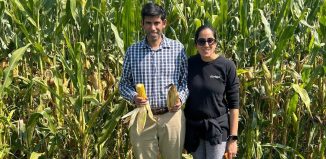CSHL’s Gillis studies links among autism genes
It starts with a question and a possible explanation. From there, the leader tests to see whether he or she was right. If the initial information suggests the original possibility was accurate, the leader runs several other tests to confirm the result.
Scientists and researchers follow that formula to crack nature’s code. They tend to get excited when, for example, they find a certain gene appears to be involved in a particular disease. Researchers can be as disappointed as little league ballplayers after losing a close game if they find no such connection.
Jesse Gillis, an assistant professor of computational genomics at Cold Spring Harbor Laboratory, however, thinks many of those so-called negative results can be as constructive as finding positive ones. “Negative results are so valuable,” he said. Negative results help scientists understand all the available information and not just the usual suspects, especially in genetic disorders.
Often, tests for the role of key genes in diseases come up with some candidates almost every time, like P53, he said. P53 is a tumor suppressor gene, which means that, when it functions correctly, it prevents cells from developing into potentially deadly tumors. When other genes have some connection to a disease, they are often related to a gene like P53.
The interpretation of results is dominated by genes for which scientists already have considerable amounts of information. The interpretation of what is going on with numerous genes tends to be dominated by several important genes.
Gillis works in a field of computational biology in which researchers are looking for combinations of genes, RNA, and proteins that all could play a role in a disease. He studies a scientific field called “guilt by association,” in which combinations of mutations, signals, or defects might increase the likelihood of developing a complicated disorder, in which people with similar symptoms have a range of genetic differences.
He uses guilt by association to understand the combination of mutations which might increase the likelihood of developing a disorder like schizophrenia or autism.
Gillis hopes to be able to look closely into what these genes have in common to “be able to say when we have false positives.” In his opinion, attempts to give comprehensive lists of the genes causing complex disorders could produce false positives that could be as high as 50 percent. He says there is something of a specificity problem, where the overlaps among genes that might have a connection to schizophrenia are not specific enough.
Before he came to CSHL, Gillis conducted post-doctoral research in the laboratory of Paul Pavlidis, an associate professor at the University of British Columbia. Gillis impressed his former lab director. Gillis is “super-smart, serious and [a] skeptical scientist who is not afraid to question deep assumptions in our field,” Pavlidis offered.
Gillis said the notion of guilt by association is an older idea. Scaling that up to apply it to expressing a disease goes back to around the turn of the millennium, when scientists started applying computational principals to these data ranges.
Where Gillis hopes to make a difference is finding something meaningful to say based on the data, instead of echoing other findings.
Gillis, who grew up in Toronto, said he “always liked messy data.” He was not as excited by the typical experiment where scientists tested one hypothesis and the results either worked or they didn’t. He enjoyed studying data-driven discovery, where he could look at a combination of data that was diverse and potentially challenging to understand and interpret.
Gillis’s scientific curiosity is, in part, a product of his childhood environment. His father is a math professor, while his mother started her doctorate in developmental psychology by watching him play as a child.
Most of his American experiences have been on Long Island. He has been so busy setting up his lab — he arrived a year and a half ago — that he hasn’t had many opportunities to pursue his penchant for sailing.
Gillis hopes to have more data to work with in the coming years. “If I say genes are likely to have a property x or this set of genes is likely to have a property x, it matters how prevalent that property is,” he said. “If a gene is always important” then finding it has a role in a disease doesn’t “validate the reason it’s important in this context.”
The negative result might tell scientists more because “the gene not showing up is the more unusual finding.”






